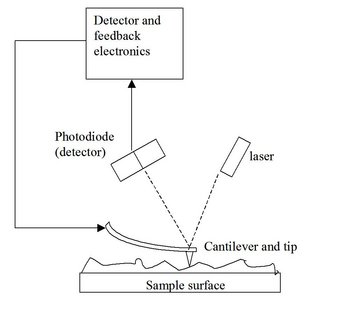
Invented:
1982
Cost:
£xpensive
Resolution:
1x10-10m (depth)
3x10-8m (lateral)

Invented:
1982
Cost:
£xpensive
Resolution:
1x10-10m (depth)
3x10-8m (lateral)
Atomic Force Microscopes run a tip over the surface that you want them to image. As this tip runs over the surface, the tip goes up and down a very tiny, but measurable amount. In order to measure this, a laser is reflected off of the top of the cantilever (a long thing fixed only at one end), on the tip's end. The reflected laser is detected, and where it hits the detector is used to determine the topography of the surface, and to return an image.
